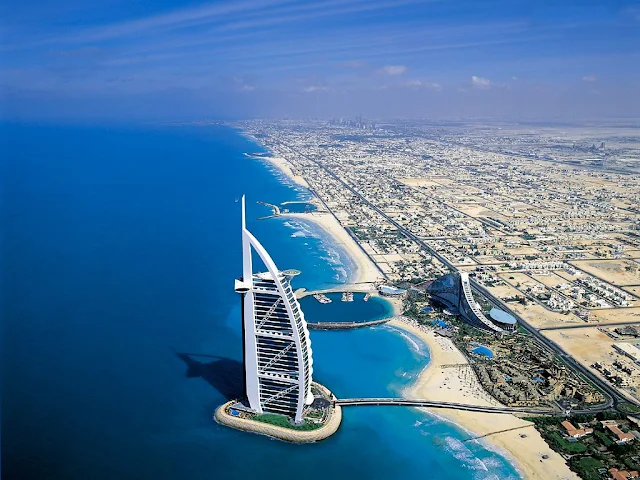 |
| Where land and sea meet |
As wind flows over the seas and oceans it creates waves in the water and these waves move the water in a circular motion towards the shores. Land surface on the coastlines is forever changing because of the waves in the seas. These waves constantly batter the coastline and erode away rocks and land. Battering of the waves against coastal rocks, traps and compresses air in the rock cracks, as the wave moves back, this air suddenly expands and is released, this causes the rocks to crack. Smaller pieces of rocks which are picked up by these waves are again flung back by the water thus increasing the effect of erosion.
More Topics:
Waves remove small and soft rocks much faster than the large ones and the areas which get eroded in this manner form bays. There are parts of the coastline which are made up of harder rocks, these don't get eroded quickly and they end up forming headlands. Larger waves have the capability of moving rocks weighing 900 to 1000 tones. Currents and waves also carry the eroded material out to sea and deposit them elsewhere along the coastline. Some of the material carried by the waves and currents is dumped to form low ridges, these are not connected to the mainland and are called bars.
The constant eroding of hard rocks often results in strange formations and outcrops of land surrounded by sea water, these are called stacks. As sea waves erode into softer parts of the land, they often form caves, these get eroded to form arches, gradually the tops of these arches cave in leaving behind the stacks. Eventually erosion has its effect on stacks as well and they too collapse in the water. Most coastlines have been reduced substantially as a result of erosion and in smaller contries which are surrounded by sea, land is now being reclaimed from the sea. Storms too have their effect upon coastlines because they have the forces to change a coastline in a very short period of time.
Tags:
Encyclopedia
